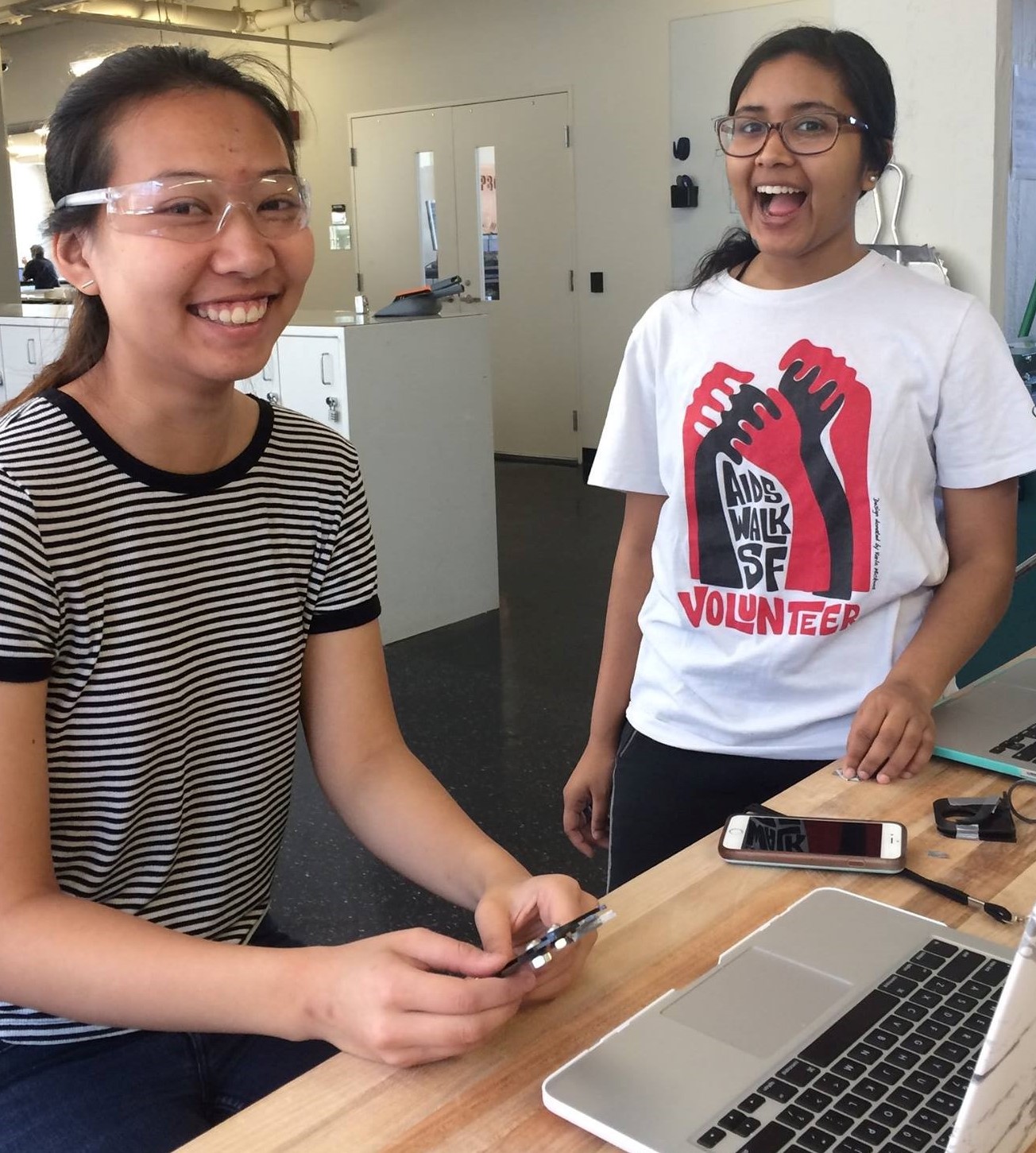custom package opening tool
assistive technology

Overview
Roles: Project Team Member, Human Centered Design, Rapid Prototyping
Skills: User Interviews, User Testing, 3D Printing, Laser Cutting
Time: January - May 2017
Team: 4 (MechE)
This project was done as part of Design for America for a local Boston community member. My role involved conducting the user interviews and testing with my teammates, as well as laser cutting the initial prototypes and assembling the final 3D printed version.
The Problem
Burt’s image is obscured for privacy purposes.
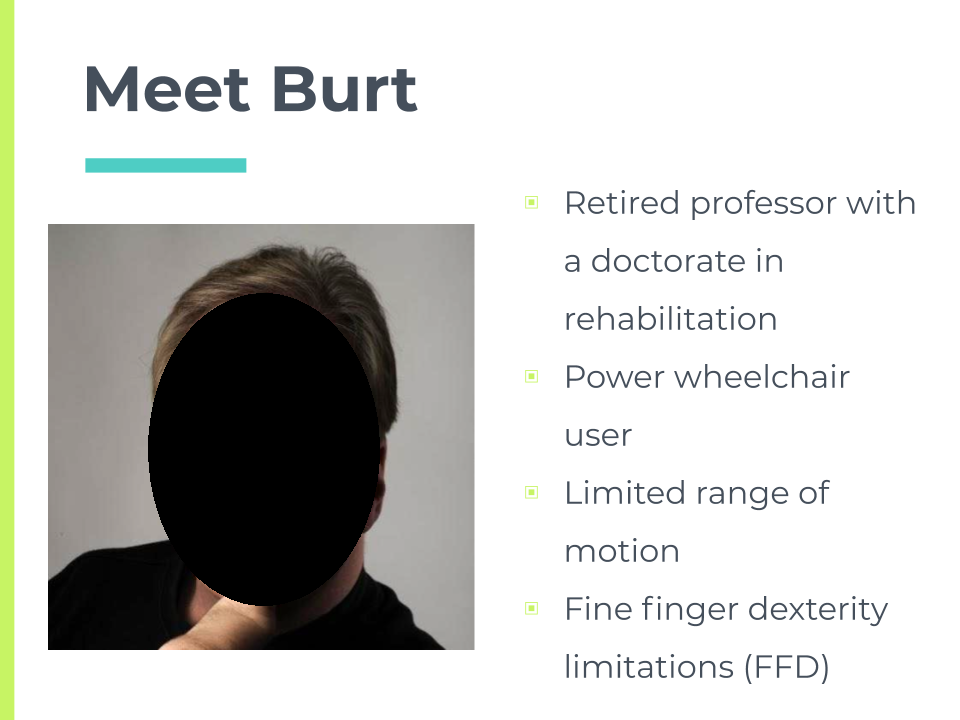

We found that Burt would gain a significant amount of independence if he was able to open packages by himself when he was not at home.

The Process
First, we observed how Burt opened packages at home, where he used a regular curved Xacto knife that he could brace against a surface and pull across a package if it was handed to him. We researched existing products that could either open or puncture bags, but none of them were suited for Burt as they required grip or were too small.
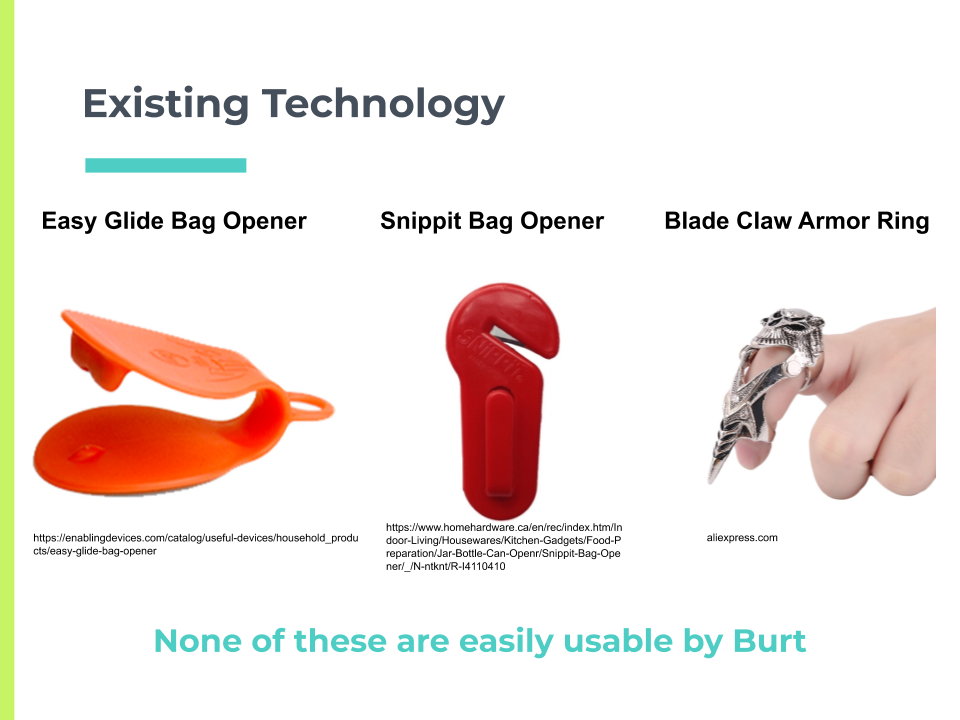
Based on interviewing Burt and outlining the advantages and disadvantages of the existing products, we determined a list of design requirements for a portable device that Burt could use to open packages.
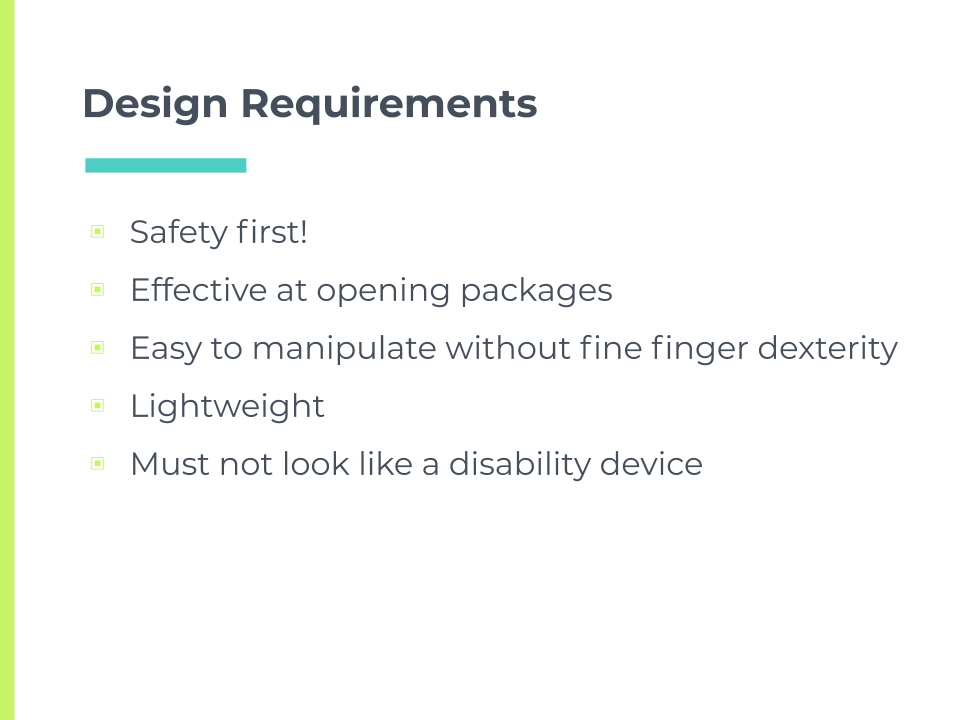
Then, we created several prototypes using laser cut pieces and the same curved Xacto blade he was used to at home.
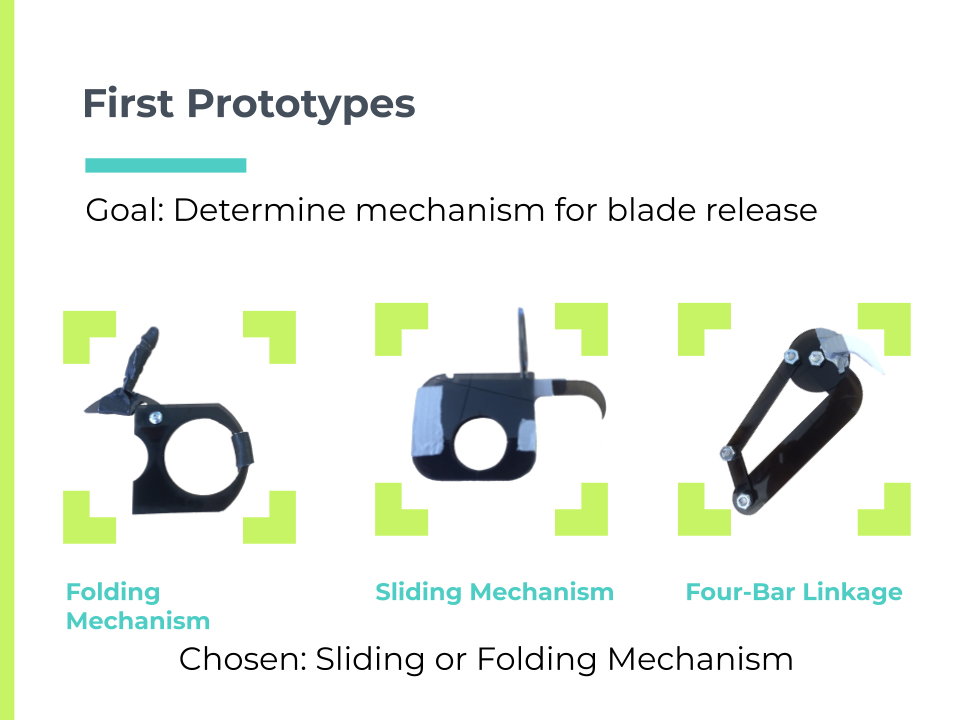
We user tested all of the prototypes with Burt to understand what attributes were important to him and which designs had those attributes.

After synthesizing information from Burt, we came up with the final design.

The Result
The final prototype was made using 3D printing and an existing curved Xacto blade. A slot was included in the body to make sure the blade would be covered when closed and tab was added to allow the blade to be pushed out easily. The blade was hinged using a bolt with sufficient friction so that the blade would not fall out but would also not requiring a lot of strength. Finally, a large hole for Burt’s finger was covered with gripping tape for comfort. The final prototype, which was given to Burt after a final design critique, is shown below.
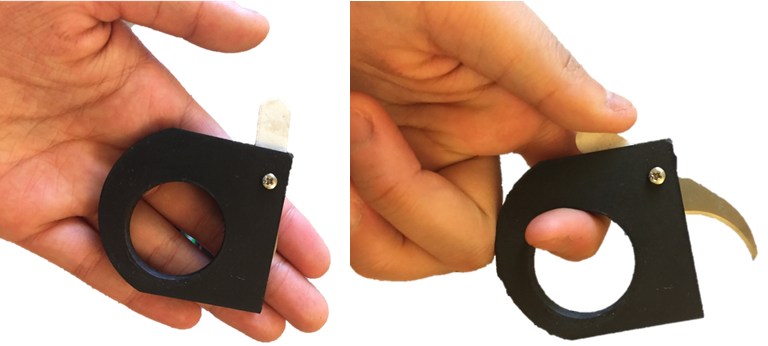
Reflection
This project was eye-opening in several ways. First, I gained an appreciation for rapid prototyping and how it could be used to learn for the actual user we were designing with. By allowing Burt to use the quickly made prototypes, we were able to synthesize what aspects of each were important to him. For example, we were able to quickly see if he had trouble using some of the opening mechanisms. Second, although we created this design for a singular user, it did make us think about universal design more critically. For instance, even without limited FFD, a compact and simple device like this might be used more easily than a traditional pocket knife or letter opener. Overall, the project allowed me to really listen to Burt’s concerns and perspective to inform the design, which is critical when designing inclusively. The image shows my teammate and I assembling the laser cut initial prototypes.
